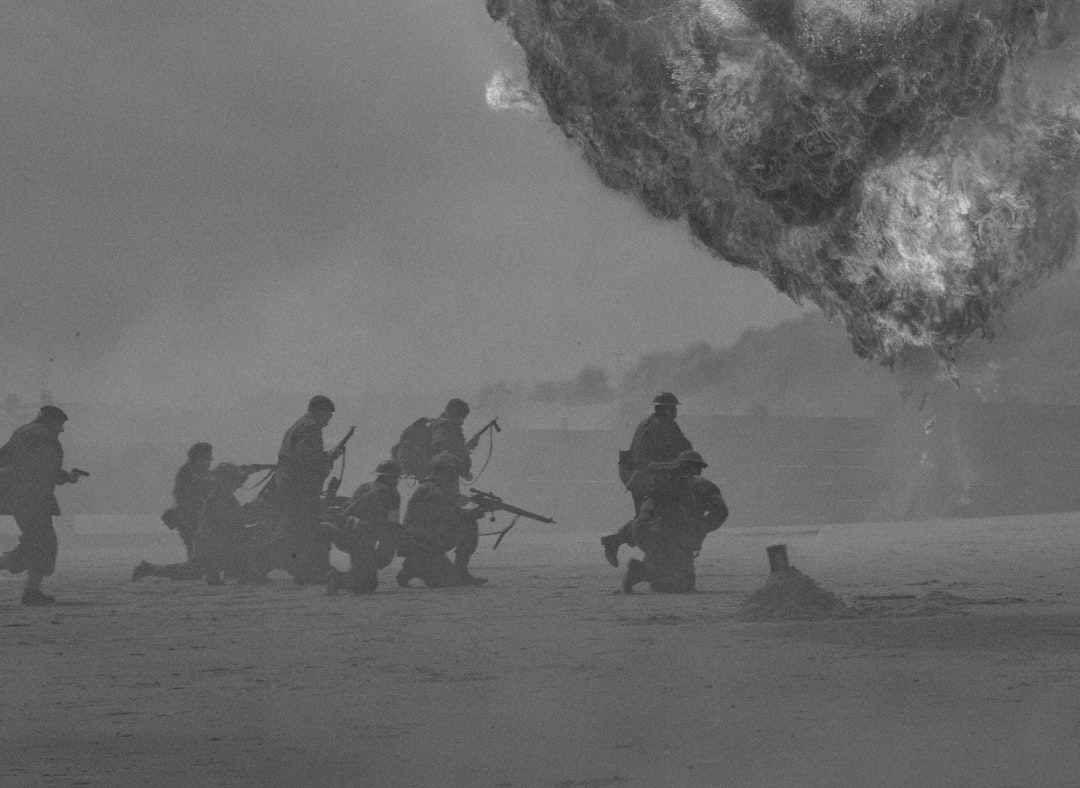The War of the Oaken Bucket – When Cities Fought for Medieval Honor

Picture this: it’s 1325, and two Italian city-states are about to spill blood over… a wooden bucket. The War of the Bucket or the War of the Oaken Bucket (Italian: Guerra della secchia rapita) was fought in 1325 between the rival city-states of Bologna and Modena. While the bucket wasn’t actually the cause of war, it became the perfect symbol of one of history’s most petty conflicts. The bucket was, according to most accurate accounts, taken as a trophy by the Modenese after the war—in fact, war was declared because Modena had captured the Bolognese castle of Monteveglio. Modena won the Battle of Zappolino, the only battle of the war. About 2,000 men were killed on both sides. Think about that – people died because medieval Italians couldn’t share territory, and all we remember is a bucket that wasn’t even the real issue. Modena won the Battle of Zappolino, the only battle of the war, and the bucket remains in Modena to this day.
The Great Emu War – When Australia Lost to Birds

In 1932, Australia declared war on 20,000 emus – and lost. This sounds like a joke from a cartoon, but it really happened. Three members of the Royal Australian Artillery were assigned to cull roughly 20,000 emus using machine guns. The assignment was made in response to petitions from local farmers complaining of emus destroying their crops. After two months, fewer than 1,000 emus were reported killed. The failure was the subject of national and international ridicule. The emus were simply too smart and fast for the military. Members of the Australian House of Representatives made light of the situation, joking that if anyone deserved medals from the conflict, it was the emus, who had “won every round so far.” Meredith reported seeing a bird run a half-mile while mortally wounded, and he once compared the birds to tanks. “If we had a military division with the bullet-carrying capacity of these birds, it would face any army in the world.”
The Pastry War – France Invaded Mexico Over Desserts

The Pastry War (Spanish: Guerra de los pasteles; French: Guerre des Pâtisseries), also known as the first French intervention in Mexico or the first Franco-Mexican war (1838–1839), began in November 1838 with the naval blockade of some Mexican ports and the capture of the fortress of San Juan de Ulúa in the port of Veracruz by French forces sent by King Louis Philippe I. It ended in March 1839 with a British-brokered peace. The war got its sweet name from a French pastry chef known only as Monsieur Remontel said that in 1832 Mexican officers looted his shop in Tacubaya (then a town on the outskirts of Mexico City). Remontel demanded 60,000 pesos as reparations for the damage (his shop was valued at less than 1,000 pesos). That’s like demanding a Ferrari as compensation for a stolen bicycle! Surprisingly, Paris took up the chef’s cause and pressed Mexico to pay 600,000 pesos as reparations – a ridiculously high sum of money for a damaged pastry shop. Paris also used the occasion to demand Mexico repay millions of dollars worth of outstanding loans. As part of said treaty the Mexican government agreed to pay 600,000 pesos as damages to French citizens while France received promises for future trade commitments in place of war indemnities.
The Football War – When Soccer Really Did Start a War

The Football War (Spanish: Guerra del fútbol), also known as the Soccer War or the 100 Hour War, was a brief military conflict fought between El Salvador and Honduras in 1969. Existing tensions between the two countries coincided with rioting during a 1970 FIFA World Cup qualifier. The war began on 14 July 1969 when the Salvadoran military launched an attack against Honduras. The Organization of American States (OAS) negotiated a cease-fire on the night of 18 July, hence its nickname. Salvadoran troops were withdrawn in early August. The matches were brutal affairs. The first game was held in Tegucigalpa, Honduras’ capital, on 8 June 1969. The Salvadoran team was harassed by Honduran fans at their hotel the night before the match. Honduras won 1–0, causing Salvadoran fans to reportedly set fire to the stadium. The second game was held in San Salvador, El Salvador’s capital, on 15 June 1969. Salvadoran fans, seeking vengeance, rioted outside the Honduran team’s hotel, leading to several deaths. It was won 3–0 by El Salvador. El Salvador suffered up to 700 casualties throughout the course of the war, including 107 deaths. Official records state Honduras suffered 165 casualties, including 99 deaths, but such numbers have been disputed; Nueva Ocotepeque’s parish priest reportedly saw 400 dead, while internal CIA documents report up to 1,500. Most historians agree that civilians accounted for the majority of the losses.
The Toledo War – America’s Bloodless Border Dispute

The Toledo War (1835–1836), also known as the Michigan–Ohio War or Ohio–Michigan War, was a boundary dispute between the U.S. state of Ohio and the adjoining territory of Michigan over what is now known as the Toledo Strip. Michigan and Ohio are now famous for their college football rivalry, but in 1835, the two states nearly went to war over a small strip of land containing the modern day city of Toledo. The whole mess started because of bad maps. There was just one problem: the best available maps depicted Lake Michigan’s southern tip as being several miles north of its true location. As a result, the original border placed the mouth of the Maumee River and the future city of Toledo in northern Ohio rather than in southern Michigan. Sheriff Wood is now remembered as the Toledo War’s lone casualty, yet in the early autumn of 1835, Michigan and Ohio seemed poised for a pitched battle. Instead, it gained title to the western three-quarters of the upper peninsula as compensation; 9,000 square miles of the most valuable timber, iron, and copper country in America. Michigan got the raw deal initially but ended up winning big when they discovered copper and iron in the Upper Peninsula.
The Kettle War – The Shot That Hit a Kitchen Pot

The Kettle War was a bizarre conflict that, in truth, was more of an international incident than a war. In 1784, the Holy Roman Empire and the Dutch Republic were squabbling over access to the ports of Antwerp and Ghent in Belgium. In a show of force, the Holy Roman emperor dispatched three vessels, led by his magnificent warship Le Louis, to seize control of the Dutch port at Amsterdam. The Dutch were waiting with their own smaller ships. When the enemy approached, their lead ship, the Dolfijn, fired a single shot that ricocheted off a kettle on the deck of the Le Louis. This terrified the ship’s incompetent captain, who immediately surrendered, handing victory — and the emperor’s flagship — to the Dutch. The Kettle War was a confrontation between the troops of the Holy Roman Empire and the Republic of the Seven Netherlands in 1784. It was named the Kettle War because the only shot fired hit a soup kettle. Imagine being the captain who surrendered an entire flagship because someone dinged your cookware. The Holy Roman Empire basically lost a war because their captain was afraid of flying kitchen equipment.
The War of Jenkins’ Ear – A Severed Body Part Started International Conflict

In 1738, a British mariner named Robert Jenkins displayed a severed, decomposing ear before the members of Parliament. As part of a formal testimony, he claimed that a Spanish coastguard officer had sliced off his ear seven years earlier as punishment for smuggling. Spurred on by this stirring testimony, the British had soon declared war on the kingdom of Spain. Thus began the outlandish “War of Jenkins’ Ear.” In truth, a clash between the British and Spanish had been in the works since the beginning of the 1700s, and Jenkins’ missing ear merely served as a convenient catalyst. The conflict had its roots in territorial disputes over the border between Spanish Florida and British Georgia, as well as the Spanish of boarding and harassing English vessels like the one captained by Jenkins. Fighting began in late 1739, and continued for two years in Florida and Georgia, with neither side emerging as the clear victor. The man literally waved around a decomposing ear in parliament and convinced them to start a war. That’s both disgusting and impressively persuasive.
The Three Hundred and Thirty-Five Years’ War – The Longest “War” Nobody Remembered

In 1651, the Netherlands decided to get involved in the English Civil War between the Royalists and Parliamentarians. During the whole messy affair, the Dutch sent a fleet of 12 warships to the Isles of Scilly, an archipelago off the southwestern tip of Cornwall, to demand reparations from the Royalists, who had been raiding Dutch shipping lanes. Their demands were ignored, at which point the Dutch declared war on the Isles of Scilly. The Dutch hung around for three months and then abandoned the fruitless conflict and sailed home. But they forgot one thing: to declare peace with the Isles of Scilly. The bloodless war technically lasted for 335 years until anyone saw fit to formally sign a peace treaty, which finally happened in 1986. The Three Hundred- and Thirty-Five-Years’ War was an alleged state of war between the Netherlands and the Isles of Scilly, and its existence is disputed. It is said to have been extended by the lack of a peace treaty for 335 years without a shot being fired, which would make it one of the world’s longest wars, and a bloodless

